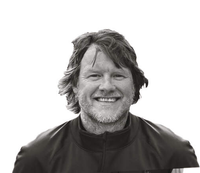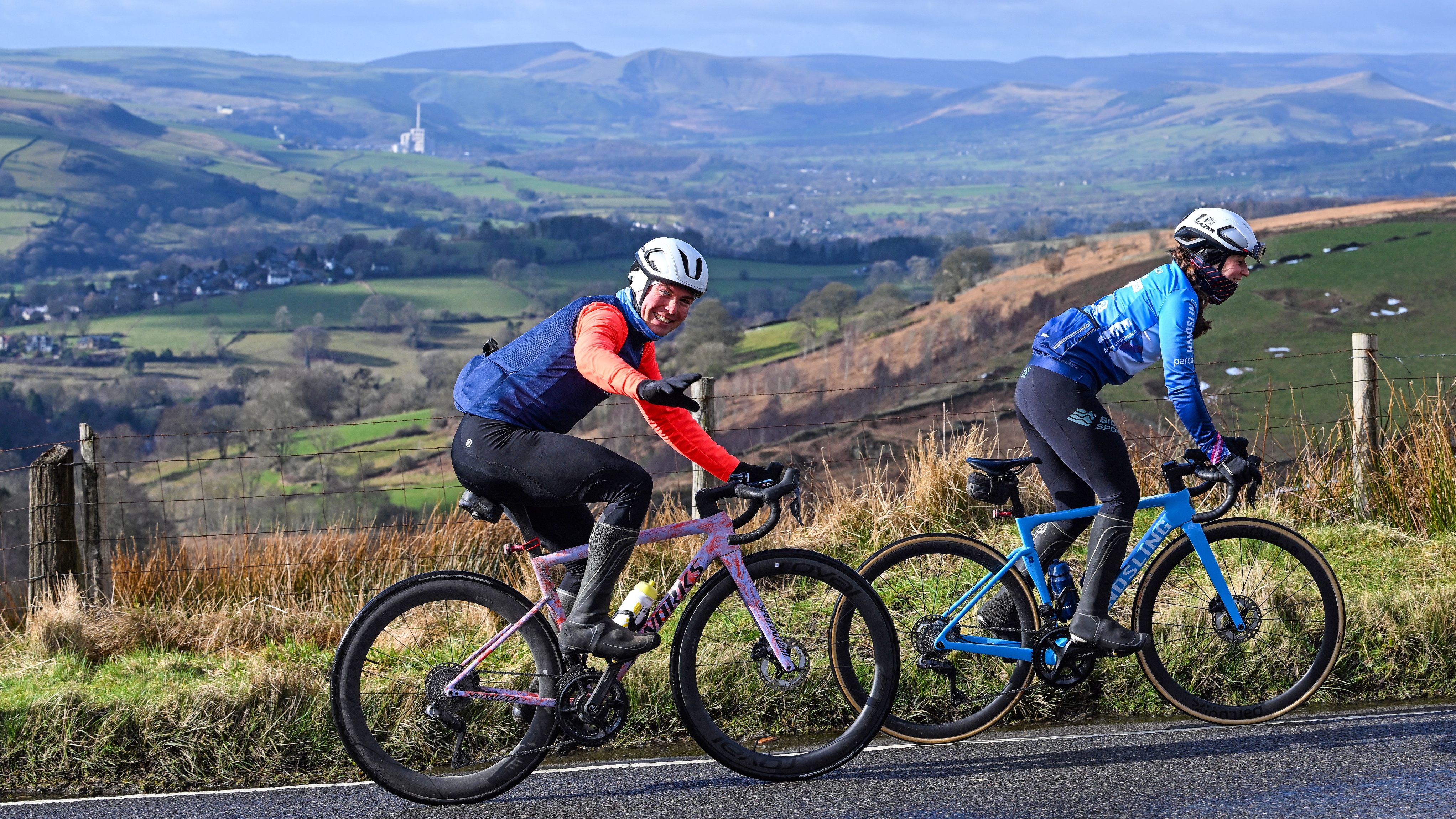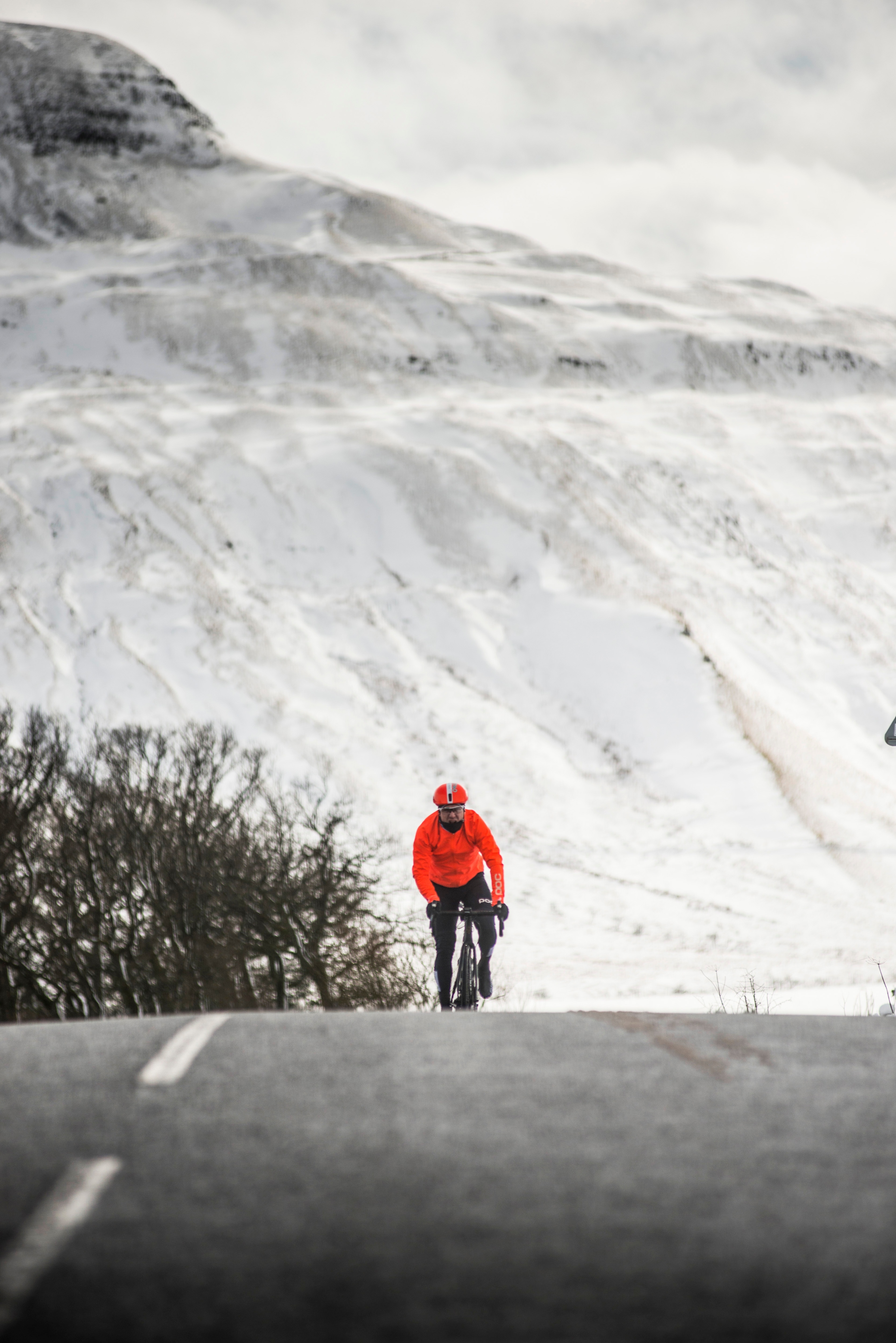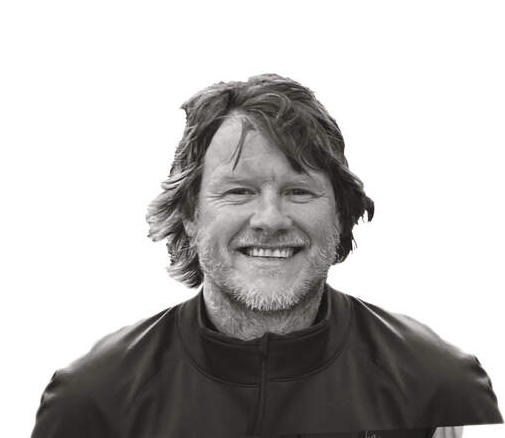Does riding in the cold always have to slow you down?
Recent research reveals that starting a ride cold can decimate endurance. James Witts examines how rolling out toasty boosts staying power


It’s Sunday morning. The sky’s clear, sending temperatures plummeting. Your breath’s visible as you chat to your cycling crew while waiting for the latecomer – yep, there’s always one – to arrive. There is much rubbing of gloves, shoulder shrugs and shaking of legs in a forlorn effort to keep warm. You’d all be fine if only you could just get going. Or would you?
As it happens, there has been some bad news on the cold front. According to a recent study in the Journal of Applied Physiology, letting yourself get cold is a big mistake. It may mean you ride slower. In fact, there are myriad reasons why it’s harder to ride at your best during the winter. But there’s a silver lining to this gloom: you no longer have to beat yourself up about those average speeds being a bit lower on cold rides. We’ll warm your cycling cockles and keep you fired up for winter riding.
Hot topic
Many of us might worry about the heat holding back our progress. But the cold’s seen more as an irritant, a discomfort, than a hindrance. In fact, a 1999 study in the Journal of Applied Physiology showed performance actually improved when training at 3°C compared to 20°C. This is because heat is an inevitable, unwanted byproduct of burning energy. “We’re inefficient human engines,” says Dr Michael Kennedy, associate professor of kinesiology at the University of Alberta, Canada. “Of the energy consumed, we only use around 25%. Much of the remaining 75% is released as heat. That’s why when we exercise, we naturally heat up.”
Going in cold
More recent research, published in the same journal, contradicts that 1999 paper and shows that the cold slows us down. In 2024 a team from Brock University in Canada tested the effects of cold-air exposure on endurance capacity, using different levels of cold strain, ranging from skin cooling to core cooling. “We wanted to see the dose response of cold at different levels,” says Stephen Cheung, one of the scientist authors. “The levels were thermoneutral, skin cooling only; core cooling of -0.5°C; and core cooling of -1.0°C. The 10 subjects rode at 70% of their peak power output to exhaustion.” The researchers found that skin cooling by itself reduced exercise time by around 30%. Both core-cooling protocols further reduced this by another 30%.

Studies have shown conflicting results
There was one key difference with the Brock study: the subjects started cold. “Often, studies into the cold and performance would see participants enter a cold lab and begin exercising,” says Cheung. “In our study, they were cold beforehand and, despite exercising quite hard, they just couldn’t warm up enough to maintain performance.” Pre-cooling involved sitting in a temperature-controlled chamber at 0°C for 30 minutes with a fan generating a wind speed of one metre per second until skin or core dropped to the required temperature. So, what’s going on physiologically that hampered performance?
At a skin-cooling level, peripheral blood vessels constrict in an effort to preserve heat. This reduces bloodflow and the flow of oxygen to the muscles. At a deeper level, shivering interferes with muscle contraction and coordination, and may itself fatigue the muscles. “How oxygen is used also changes,” says Cheung, explaining that oxygen is less efficiently transported from blood to muscle. Cold temperatures harming endurance by hastening the onset of fatigue might not come as a surprise, but the big takeaway from this study is the difference between riding in the cold and being cold before you start riding.
Go with the flow
Thankfully, there are ways to combat the cold. The first is by warming up before you leave the house – ensuring good blood-flow to the peripheries. “Once blood-flow is shut down, it’s hard to reopen the vessels,” says Professor Mike Tipton, a thermoregulation specialist at the University of Portsmouth. “In our cold studies, we have participants walk or jog up and down a staircase for around 10 minutes to get the blood flowing. One way to tell if you’re warmed up is to place your fingers on your lips.” He explains that warm lips signal vasodilation, indicating you have a warm body too. An easy pre-ride warm-up is spending 10 minutes on the indoor trainer. If you’re at a winter race, leave all your warm kit on until the very last minute.
The latest race content, interviews, features, reviews and expert buying guides, direct to your inbox!
On-bike clothing is also important, of course. “Know that a man in the cold is not necessarily a cold man,” says Tipton. “That’s a quote from exercise physiologist David Bass from the 1980s, highlighting that we’re more interested in skin tissue temperature than air temperature.” His point is that cold air can be insulated against. “When it comes to the right clothing, we’re talking about layering.”

Warming up before you leave, and, wearing the right layers could make all the difference
Correct layering means insulating just enough to keep you warm but not so much that it induces excessive sweating. “We know that sweating directly contributes to your thermal comfort,” says Kennedy. “The areas where sweat on your skin matters most is the upper back, neck and upper chest.” If you overdress and exercise hard, sweating heavily, as soon as you reduce the pace and cool down, the dampness has a rapid-chilling effect. “Wear clothing that’s breathable but also wind resistant,” says Kennedy, hinting at the windchill effect. If it’s 5°C and you’re riding at 20mph against a 10mph headwind, the windchill temperature is -1°C. “Ideally you want air gaps between your base layer and bike jersey, between bike jersey and jacket,” adds Kennedy. “These gaps maintain a microclimate and preserve comfort. Ensure that the base layer is close against the skin to help wick away moisture.”
Wicking is the act of drawing sweat from the body to the outer surface of the fabric. Merino wool and polyester are good choices, as they don’t hold moisture. Windstopper material blocks the chill, and sunglasses with clear lenses prevent the eyes from streaming. “If it’s really cold, apply Vaseline on your lips and nasal passages because this cuts cold exposure too,” Kennedy says. Insulating gloves are essential, as is a neck-warmer. “Covering your mouth and nose is a good idea,” says Kennedy, “and recent research has found that maintaining nostril temperature helps you to fight off inhaled viruses.”
Beyond your wardrobe, route choice is also worth thinking about. “Go for longer, sustained endurance on the flat rather than intervals with lots of stop-starting or hills with tricky descents,” says Cheung. “The latter will have you overheat and then be soaked with sweat that cools you down too much. It’s also safer, while on slippery surfaces, to be riding at a steady pace.” If your route is flanked by hedgerows, even better, as the cover provides shelter from the windchill.
Slow burn
This forward planning will keep you warm, but physics may still dictate that you ride slower. “Firstly, your bike’s inevitably heavier and less aerodynamic because of accessories like mudguards and lights,” says Cheung. There’s also the fact that colder tyres are slower tyres because stiff rubber less easily deforms and thus rolling resistance is higher.
“While layering will keep you warm, more clothing layers results in more friction between layers,” adds Cheung. “The fact that there’s less roadside foliage means you’ll endure greater resistance from the wind, too, which will slow you down. And there’s the physical fact that air is denser when cold, meaning you face more air resistance.”
Hot air being faster is one reason why velodromes crank up the thermostat; Lee Valley, for example, basked in 29°C for the 2012 Olympic track programme. How much does dense, cold slow you down?
Sidestepping the complex maths, in a summer temperature of 20.9°C, you’re looking at air density of 1.20kg per metre cubed. Meanwhile, a winter temperature of 6.9°C results in 1.27kg per metre cubed. This higher air density cranks up air resistance, which translates to a noticeable 0.5-1kph (0.3-0.6mph) difference at above 32kph (19.9mph).
Frozen by numbers

25 times faster – rate of heat loss from wet feet compared to dry. It might be time to invest in those waterproof booties
10 days – amount of cold exposure that can alter your perception of the cold. You should be naturally ‘warmer’ by February
40% – the amount by which cold temperatures can reduce thirst, according to research
600 kilometres – distance cycled from Antarctic coast to the South Pole, first achieved by British adventurer Maria Leijerstam in 2013
12% – of winter journeys taken by bike in the Finnish city of Oulu, bordering Lapland, despite temperatures dropping to -30°C in the depths of winter (compared to 2% in England)
-0.53°C – the temperature at which human tissue freezes, aka frostbite. Keep those tootsies warm!
Hit the road running

Most club runs will slow down over winter
Where does that leave us as we face the next couple months of cold rides? Decamp indoors and clamp yourself to your trainer? Not necessarily, though the trainer has its place, especially as a warm-up tool. Whether you dash up and down your staircase a few times or do some vigorous star jumps, warming up before you head out gets the blood flowing to your working muscles, giving you a head-start against the cold.
On the other hand, if you stand around for 30 minutes while your punctually challenged mate checks and rechecks their bike, your plummeting core temperature – as well as being damned uncomfortable – may harm your endurance performance. Ensure you layer eff ectively, so you’ll be warm but not sweating heavily. And if it’s really cold, cover your mouth with a balaclava. Keeping warm is the key to enjoying your winter riding and minimising negative eff ects of lower temperatures.
You can’t beat Mother Nature, accept it. This is not the season for PBs, but rather for consistency. Layer up, warm up, get out there and enjoy.
James Witts is a Somerset-based cycling writer, keen amateur cyclist and author of Riding with the Rocketmen (Bloomsbury, £14.99)
You must confirm your public display name before commenting
Please logout and then login again, you will then be prompted to enter your display name.
